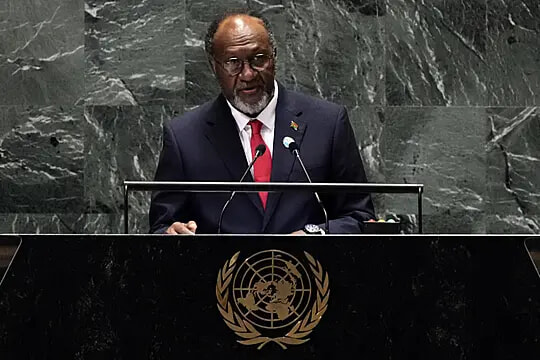
Global Conflicts Are Literally Reshaping the Way Pilots Navigate the Skies During Air Travel
This is fascinating.
Published June 30, 2025
Advertisement
Advertisement
1. The Shrinking World of Safe Airspace

In recent years, the skies above major conflict zones have become increasingly deserted as global crises multiply and reshape air travel.Since the Russian invasion of Ukraine in 2022, and amid intensifying hostilities between Israel and Iran, vast swaths of international airspace have been transformed into no-fly zones, forcing airlines to redraw their routes with little warning.Live tracking maps, such as those from Flightradar24, now reveal gaping holes over Ukraine, Russia, Israel, Iran, and neighboring countries like Lebanon, Syria, Iraq, and Kuwait, as flights are rerouted to avoid danger.The sudden absence of commercial planes in these regions is a direct response to ongoing missile strikes, retaliatory attacks, and unpredictable military escalations that put civilian aircraft at risk.Airlines must act fast to assess shifting threats and close routes, as was seen when Israeli strikes on Iran's nuclear facilities triggered heavy retaliation and a regional aviation shutdown.Natural disasters, too, add to the uncertainty; Indonesia’s Mount Lewotobi Laki Laki recently erupted, grounding flights and compounding the chaos for global carriers.Aviation consultants note that airspace closures, whether caused by war or nature, have become “the new normal,” as airlines scramble to navigate around geopolitical and environmental hazards.With every closure, the remaining available airspace becomes more congested, intensifying the logistical puzzle for pilots, air traffic controllers, and airline planners.Despite sophisticated planning departments, even open airspace is sometimes deemed unsafe by more cautious carriers, adding further complexity to the web of global travel.For passengers, these changes mean longer journeys, increased costs, and a constant reminder that international politics and natural forces directly shape the routes above their heads.As global events continue to evolve, the once seamless world of air travel is now permanently marked by the scars of conflict and the unpredictability of nature.
Advertisement
2. Pilots on the Front Lines of Chaos

Flying over conflict zones today is a high-stakes exercise in vigilance and adaptation, as pilots encounter threats far beyond mechanical failures or bad weather.One UK long-haul pilot recently recounted a harrowing episode over Israel, where cockpit alarms blared, clocks began ticking backwards, and the plane’s internal systems incorrectly showed it was flying dangerously low—classic signs of GPS spoofing.Rather than reacting to faulty warnings, the experienced crew had to override their training and trust their instincts, aware that spoofing is now a regular part of flying near combat areas.GPS spoofing—where radio transmitters send false signals to confuse aircraft navigation systems—has increased 500% in the last year, particularly around zones like the eastern Mediterranean, the Black Sea, and the India-Pakistan border.Pilots must navigate a cascade of false alerts, rising workloads, and the ever-present risk that a real emergency might be masked by a spoofed warning.Despite these challenges, seasoned pilots remain confident in their ability to keep passengers safe, though the psychological burden of constant system interference is taking a toll.Crew are acutely aware that, at cruising altitudes above war-torn landscapes, the buffer between safe and unsafe can feel perilously thin.Meanwhile, the intricate web of modern aircraft systems means GPS interference can cause unexpected glitches elsewhere in the plane, demanding extra vigilance from flight crews.The pressure to manage all these variables is mounting, with many in the industry warning of the “normalisation of deviance”—a tendency to ignore alarms that are frequently false, which could undermine safety in the long run.Flight safety organizations now recognize that, while technology is critical, it is the human element—pilot training, composure, and decision-making—that keeps flights secure.Every day, pilots must balance their trust in their instruments with hard-earned experience, knowing that quick thinking and calm under pressure are the final defense against disaster.Through all this, commercial flying remains statistically safe, but the challenges faced by the men and women in the cockpit have never been greater.
Advertisement
3. The Ripple Effects of War on Airlines

For airlines, the escalation of conflict means more than just avoiding bombs; it translates into longer flights, steeper costs, and mounting logistical headaches.When Ukraine and large parts of Russia became no-fly zones, Western airlines were forced into complex detours, adding hours to journeys and millions in extra fuel bills.Routes between Europe and Asia are especially affected, with some flights taking up to three and a half hours longer, increasing both operating expenses and greenhouse gas emissions.The airspace squeeze is further complicated by bans on Western carriers over Russia, pushing traffic through already congested Middle Eastern corridors where other risks—missiles, drones, and sudden strikes—await.In April, for example, Iran’s missile barrage on a US base in Qatar prompted a scramble as dozens of flights rerouted mid-air and others were canceled altogether.Such reroutings have a domino effect on the industry, forcing airlines to increase prices, reschedule crews, and sometimes suspend routes entirely when safe passage is impossible.These complications spill over into the environment, as increased flight times drive up fuel consumption and carbon emissions, a cost airlines cannot simply pass on to consumers.Despite airlines’ efforts to minimize disruption, the reality is that the risks from human conflict and natural disasters—volcanic eruptions, for instance—now regularly upend carefully crafted schedules.Natural phenomena can have even greater effects; the eruption of Iceland’s Eyjafjallajökull in 2010 grounded millions of travelers and cost the industry billions, a stark reminder that the skies are never truly under human control.Airlines have entire teams dedicated to monitoring airspace safety, but even the best planning cannot fully anticipate the sudden shifts of war or nature.The result is a global network of flights that is perpetually in flux, with every new conflict or eruption reshaping the map of possibility.This new era demands constant adaptation, rapid response, and an acceptance that unpredictability is now built into the very fabric of international air travel.
Advertisement
4. Choked Corridors and Crowded Skies

As conflict zones expand, the world’s commercial air traffic is being funneled into ever-narrower corridors, creating new pressures and dangers for everyone in the sky.With entire regions suddenly off-limits—Ukraine, much of Russia, and swathes of the Middle East—planes must pack into the limited routes that remain, especially over Saudi Arabia, Egypt, and Turkey.Air traffic controllers are tasked with orchestrating this complex ballet, squeezing more planes into fewer lanes and adjusting altitudes, take-off times, and landing slots to keep the system moving.The congestion is compounded by the sheer volume of flights; air traffic in the Persian Gulf has tripled in recent years, leaving little margin for error when emergencies arise.For short-haul flights between Central Asia and hubs like Dubai or Doha, what was once a quick trip through Iranian airspace now requires time-consuming detours around the entire region.These changes impact not only the cost and timing of flights but also strain the global infrastructure of airports, ground crews, and maintenance teams, all of whom must adapt to new patterns.The ripple effects reach passengers as well: delays are more common, connection times are thrown into chaos, and the unpredictability of cancellations becomes part of the travel experience.The extra work for air traffic control comes at a price, as prime slots at major airports become scarcer and more expensive, further driving up operational costs.Despite efforts to adjust, the limits of the system are being tested, with experts warning that even minor disruptions can now trigger major chain reactions throughout global travel.As airspace shrinks, the choreography of safe flight becomes more intricate, demanding heightened vigilance and coordination across continents.In this landscape, every takeoff and landing is a minor victory against the mounting odds, as the world’s airlines race to keep passengers moving through a sky that grows more crowded—and more contested—by the day.
Advertisement
5. The Economic Toll of Turbulent Skies

The cascading crises in the air have taken a heavy financial toll on airlines, turning once-profitable routes into logistical nightmares.Longer detours translate directly into higher costs, as every extra hour in the air burns thousands of dollars in jet fuel—a burden made worse by the volatile price of oil.Beyond fuel, airlines must pay for additional crew hours, new overflight fees charged by countries allowing diverted traffic, and increased maintenance from more intensive use of their fleets.Ticket prices cannot always keep pace with these rising expenses, since most passengers buy flights well before conflict erupts, leaving airlines to absorb the shortfall.Revenue losses are exacerbated by canceled flights, stranded passengers, and diminished demand for travel to volatile regions like Tel Aviv, Dubai, and Doha, where American and European carriers have suspended service.Stock prices for major airlines are sensitive to every new development, with news of ceasefires or the restoration of some flights leading to sharp rebounds—but never quite erasing the uncertainty.Meanwhile, the unpredictability of geopolitical events makes long-term planning nearly impossible, as routes and timetables must be redrawn at a moment’s notice.Aviation analysts note that these problems are not confined to any single conflict, as the square mileage of global conflict zones has increased by 65% since 2021.Even as some flights resume after temporary lulls in fighting, the risk of renewed hostilities—and further shutdowns—remains ever-present, undermining stability in the industry.Add in the challenges of rescheduling crews, rerouting aircraft, and rebooking passengers, and the bottom line becomes even more precarious.As airlines confront the reality that conflict-driven volatility is here to stay, the business of keeping the world connected by air grows ever more costly and complex.
Advertisement
6. GPS Spoofing: The Invisible Threat

Modern aircraft rely on sophisticated navigation systems, but the proliferation of GPS spoofing has exposed a dangerous vulnerability in the aviation world.Spoofing attacks, where hostile forces send false signals to mislead aircraft about their position, have exploded around warzones, creating confusion and potential hazards for commercial pilots.Flight experts report a fivefold increase in such incidents, with up to 1,500 flights a day affected in hotspots like the eastern Mediterranean, Black Sea, and South Asia.Pilots describe alarms that flash, instruments that give impossible readings, and systems that warn of imminent collision—when in reality, the plane is safe.While most crews are trained to recognize spoofing and react accordingly, the flood of false alerts forces pilots to constantly question their instruments, adding mental strain and risk of error.These incidents are not merely academic; in 2014, Malaysia Airlines Flight 17 was shot down over Ukraine, a tragedy underscoring the real-world stakes of misidentifying a civilian plane.The interconnectedness of modern aircraft means that interference with GPS can cascade into other systems, locking up vital controls or misleading pilots about altitude, speed, or location.Aviation safety organizations now view the normalization of false alarms as a systemic risk, warning that complacency or distraction could one day allow a real emergency to go unnoticed.Despite assurances that flying remains safe, pilots admit the weight of new procedures and threats is changing the profession, demanding constant adaptation and vigilance.The industry’s ability to respond to spoofing is a testament to pilot training and resilience, but the arms race between attackers and defenders continues.In an era where digital warfare is as real as physical, GPS spoofing stands out as a uniquely modern danger—one that will only grow as conflicts proliferate.
Advertisement
7. Natural Disasters: The Other Wild Card

While wars dominate headlines, natural disasters such as volcanic eruptions can ground flights across continents and reshape the global air map just as dramatically.Indonesia’s Mount Lewotobi Laki Laki, for instance, recently erupted, spewing ash that forced mass flight cancellations and reroutings throughout Southeast Asia.Volcanic ash is particularly dangerous for aircraft, as tiny silica particles can fuse to engine parts at high temperatures, causing catastrophic engine failures mid-flight.Past eruptions, like Iceland’s Eyjafjallajökull in 2010, halted flights for millions of passengers and cost the aviation industry over $1.7 billion, creating a ripple effect that dwarfed even some war-driven shutdowns.Unlike conflicts, volcanic disruptions are purely unpredictable; their effects can stretch far beyond the immediate area, riding the winds for thousands of miles.For airlines already stretched by geopolitical crises, a major natural event can tip the balance from difficult to unmanageable, compounding delays and losses.Airlines must develop real-time response strategies to assess risks and reroute flights, often relying on international cooperation and satellite monitoring to keep planes safe.The aftermath of a major eruption lingers long after the skies clear, as maintenance crews inspect engines for hidden damage and passengers scramble for alternate routes.The industry’s experience with natural disasters serves as a stark reminder that human planning has limits, and that nature can upend even the best-laid strategies.For travelers, the prospect of a sudden volcanic event is just one more uncertainty in an already unpredictable world of air travel.As climate change increases the frequency and intensity of natural disasters, airlines must brace for even greater disruptions in the years ahead.
Advertisement
8. The Human Cost: Stranded Passengers and Altered Lives

Beyond the technical and financial implications, the upheaval in global airspace has a profound impact on travelers whose lives are upended by sudden cancellations and delays.Tens of thousands of passengers have found themselves stranded as airlines suspend service to embattled cities like Tel Aviv or divert flights mid-journey to avoid missile strikes.The ripple effects disrupt vacations, business trips, and family reunions, as travelers scramble for new routes or wait days for flights to resume.Those who do make it onto planes often face longer journeys, missed connections, and the anxiety of flying close to active conflict zones.Airlines must manage a flood of customer service requests, rebooking passengers on alternate routes while contending with limited availability and overbooked flights.In some cases, entire airports, like Ben Gurion International in Tel Aviv, have fallen eerily silent as the usual bustle of global travel grinds to a halt.The uncertainty is especially acute for travelers with critical needs—students, medical patients, and refugees—whose plans are thrown into chaos by forces far beyond their control.While some carriers offer refunds or credits, the broader cost in time, stress, and disrupted plans cannot be easily measured or compensated.The specter of future disruptions hangs over every booking, as travelers and airlines alike adjust to a reality where any ticket might suddenly become worthless.For many, the experience has reshaped their sense of security and possibility, highlighting the fragility of even the most routine journey.In the new age of global uncertainty, every trip carries an extra measure of risk and resilience.
Advertisement
9. The Role of Technology and Coordination

Managing the complexity of modern airspace requires cutting-edge technology, relentless coordination, and global cooperation at an unprecedented scale.Airlines deploy teams of specialists to monitor global events, track risks in real time, and adjust routes on the fly as conditions change.Flight planning software ingests streams of data—weather, conflict reports, volcanic activity—and recalculates safe paths, sometimes rerouting hundreds of planes in a matter of hours.Air traffic controllers use advanced systems to manage crowded corridors, assigning altitudes and slots to maximize safety while minimizing delay.International agencies and industry groups share intelligence about new threats, from missile strikes to GPS spoofing, providing airlines with critical updates to inform decisions.Despite these advances, the pace of change can outstrip even the most sophisticated systems, as real-world events demand rapid, human-led responses.Collaboration between governments, airlines, and security agencies is essential to keep skies safe and open, but political tensions can sometimes hinder information-sharing.The challenge is compounded by the sheer scale of global aviation, with more flights and passengers than ever before pressing against the limits of infrastructure.Technology offers powerful tools, but the unpredictability of conflict and nature ensures that no system is foolproof, and quick thinking remains indispensable.As the aviation industry evolves, investment in new solutions—better sensors, secure navigation, resilient networks—will be key to navigating the hazards ahead.The delicate balance between automation and human expertise will define the future of flying through uncertain skies.
Advertisement
10. The New Normal of Turbulence

The combined forces of war, political instability, cyber threats, and natural disasters have rewritten the rules of global air travel, ushering in an era of persistent turbulence.Where once the world’s skies seemed limitless, conflict and catastrophe now carve out vast areas of uncertainty, forcing airlines, pilots, and passengers to adapt on the fly.The economic, environmental, and personal costs of these disruptions are mounting, challenging an industry built on the promise of seamless global connection.Flight routes are now as much a product of geopolitics as of engineering, with every new hotspot reshaping the boundaries of possibility and risk.Despite these headwinds, the aviation industry has demonstrated remarkable resilience, responding to crises with innovation, flexibility, and a commitment to safety.The task of navigating this new normal falls on everyone—from the pilots who weigh every alarm, to the controllers who orchestrate crowded skies, to the travelers who face delays and uncertainty with patience.As the world’s crises show no sign of abating, the future of flight will demand even greater collaboration, creativity, and endurance.Through all the chaos, one truth endures: flying remains one of humanity’s most extraordinary achievements, linking distant corners of the earth even in times of fear.Every plane that lands safely is a testament to the power of adaptation and the enduring spirit of exploration.In an era defined by upheaval, the story of global air travel is being written anew—one flight, one challenge, and one remarkable journey at a time.
Advertisement
Advertisement
You May Also Like






